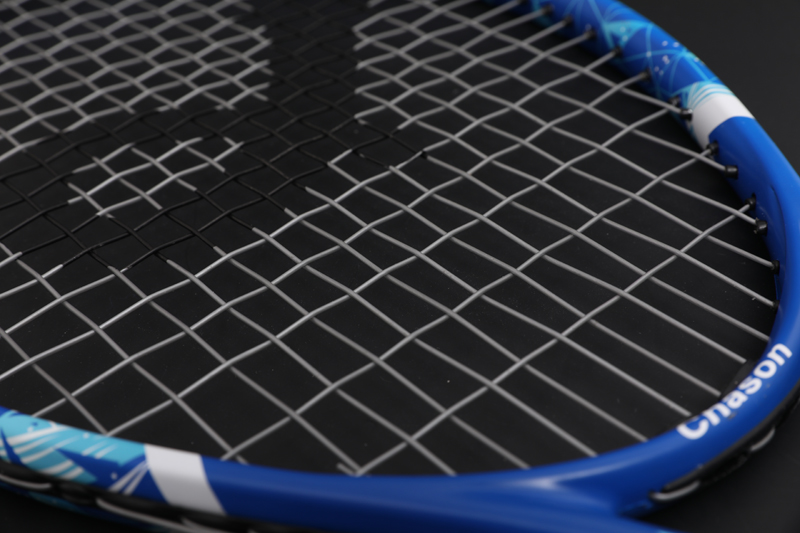

In the world of badminton, every detail of a player's equipment can profoundly affect their performance on the court. One critical element that often determines how a racket behaves during play is its string tension. The tension of the strings not only influences power and shot quality but also plays a crucial role in control, feel, and overall playing experience. Here’s an in-depth exploration of how different string tensions impact gameplay and control in badminton:
1. Power and Shot Quality
Higher String Tension (e.g., 26-30 lbs):
Power Generation: Rackets strong at higher tensions are known for their ability to generate significant power during shots. The tight strings store more energy upon impact and release it efficiently, resulting in faster shuttlecock speed off the 27"aluminum Alloy Integrated Racket.
Suitability: Players who favor a more aggressive style, relying on powerful smashes and clears to dominate rallies, often opt for higher string tensions. These tensions help maximize shot velocity and effectiveness from the baseline, providing a formidable advantage in singles play or when seeking to gain control of the rally.
Lower String Tension (e.g., 20-24 lbs):
Control and Forgiveness: Lower tension strings offer a different appeal by prioritizing control and shot placement over raw power. While they may not deliver as much initial power as higher tensions, they provide a larger sweet spot on the racket's string bed.
Maneuverability: This forgiving nature allows players to maintain consistency in their shots, even when the shuttle is not struck perfectly. It enhances maneuverability and finesse, making it ideal for doubles players and those who rely on precise placement and tactical play rather than sheer power.

2. Control and Shot Placement
Higher String Tension:
Precision: Rackets with higher tensions offer superior control over shot placement due to reduced string bed movement upon impact. This stability allows players to execute accurate drops, net shots, and slices with minimal power loss.
Trade-off: However, the reduced forgiveness on off-center hits means that players must maintain precise technique to avoid errors, particularly when executing delicate shots requiring finesse.
Lower String Tension:
Enhanced Sweet Spot: Lower tension strings enlarge the sweet spot on the racket, providing a wider margin for error. This forgiving characteristic allows players to maintain consistent performance and accuracy, even under pressure.
Versatility: The increased string bed movement enables players to generate spin and vary shot trajectories more easily. This versatility is advantageous for creating deceptive shots and adapting to different playing conditions or opponents' strategies.
3. Feel and Comfort
Higher String Tension:
Feedback: Rackets strong at higher tensions typically provide a firmer feel upon impact, offering direct feedback to the player's hand. This solid sensation is preferred by some players who seek a responsive racket that enhances their connection to each shot.
Vibration: However, the firmer feel may also transmit more vibrations to the player's arm and shoulder, potentially leading to discomfort or fatigue during extended play.
Lower String Tension:
Comfort: Lower tension strings offer a softer feel on contact, absorbing more of the shock and reducing vibrations. This promotes a more comfortable playing experience and reduces the risk of arm strain or injury over prolonged matches.
Preference: Players who prioritize comfort and enjoy a more cushioned touch often favor lower string tensions for their forgiving nature and overall playability.
4. Adaptability and Player Preference
Customization: String tension is a highly customizable aspect of racket setup that allows players to tailor their equipment to fit specific playing styles, skill levels, and personal preferences.
Experimentation: Advanced players often experiment with different tensions to optimize their racket for different conditions or opponent tactics. This adaptability ensures that their equipment enhances rather than limits their performance on the court.
Learning Curve: Beginners and intermediate players can benefit from gradually adjusting string tensions to find the balance that best suits their development and comfort level, aiding in skill progression and confidence during gameplay.

Hangzhou Chengxing Sporting Goods Co., Ltd.
 English
English English
English